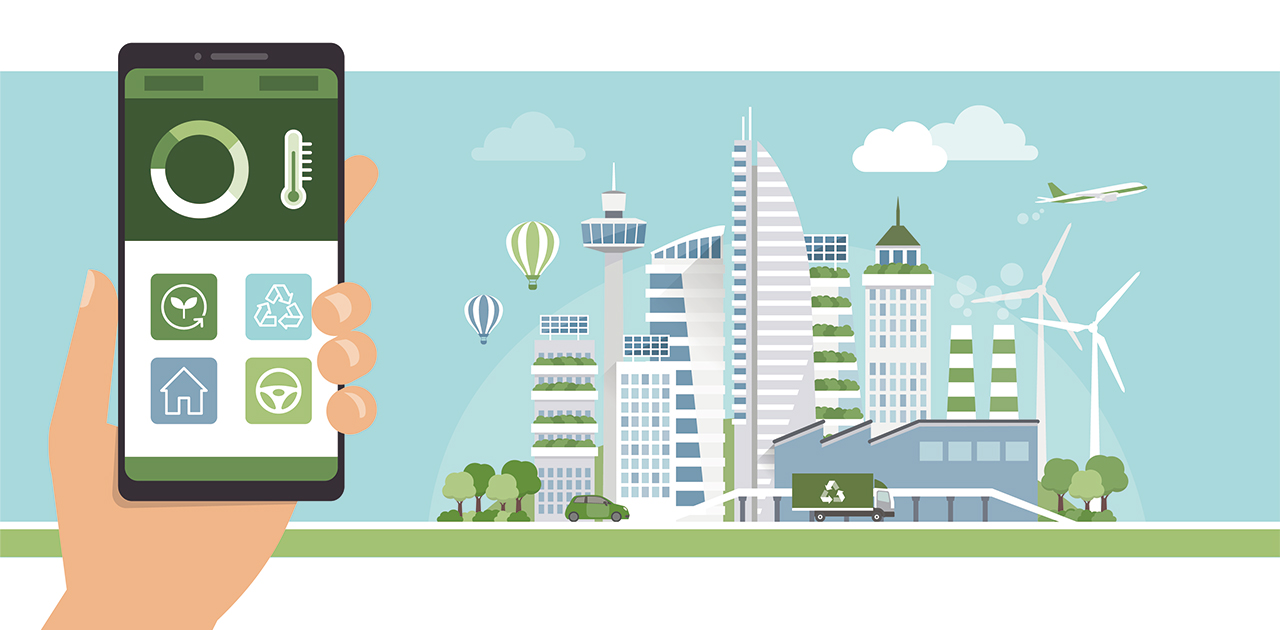The 2019 Smart Building Report was the first report drawn up by the Energy&Strategy Group of the School of Management of the Polytechnic University of Milan that tackled the issue of Smart Building systematically, with the aim of analysing the situation in our country.
The report contains a definition of a Smart Building, which is described as ‘a building in which systems are managed in an integrated and automated way by adopting an infrastructure for monitoring and controlling the systems themselves, so as to achieve optimal energy savings, comfort and safety for the occupants, while ensuring their integration into the building’s electrical system’. In other words, Smart Building means having optimised spaces that increase well-being and significantly reduce health problems in residential or work environments.
This report also shows that in 2018, the turnover relating to Smart Building investments in Italy amounted to approximately €3.6 billion, almost evenly distributed between building devices & solutions (41%, equal to €1.47 billion), automation technologies (31%, equal to €1.1 billion) and management and control platforms (28%, equal to €1.02 billion). This growing trend is likely to further accelerate over the next 5 years: it is estimated that investments in energy efficiency and digitisation in Europe will give the economy a major boost.
Why are we moving towards smart buildings?
Vittorio Chiesa, Director of the Energy&Strategy Group, explains that buildings in the EU are responsible for approximately 40% of the energy consumed and 36% of CO2 emissions, since approximately 35% of buildings are more than 50 years old and nearly 75% of them are considered energy inefficient. Only between 0.4 and 1.2% (depending on the country) of the building stock is renewed with new buildings each year. Consequently, it is clear that building redevelopment plays a crucial role in achieving the energy targets set by the EU for 2030, as it is estimated that it can reduce primary energy consumption in Europe by 5-6%, which will result in a 5% reduction in carbon dioxide emissions.
Integrating technologies and combining professional expertise
Technologies play a key role in smart building by allowing a variety of subsystems that originally operated independently to be connected. However, the professionals involved also have an important role to play. Connecting several plants and interconnecting them with many systems is a challenge for those who design them, those who manage them, those who install them, and even those who use them. This is because the concept of smart building, or building 4.0, is changing the rules for professionals in the industry, from architects and designers to interior design companies and manufacturers of building automation systems.
Sensors and the Internet of Things in general are making it much easier for designers to design modern buildings. Sensors installed in buildings that transmit data over the Internet offer the opportunity to manage buildings while saving on energy and consumption costs. They also allow the performance of a plant to be monitored and appropriate action to be taken in case of equipment malfunctioning, even before the alarm sounds (predictive maintenance). This smart management also applies to entire districts: for instance, the Porta Nuova district in Milan, where not only the buildings but also the facility management activities of the entire area have been designed in a smart way.
What are the most obvious trends in this sector?
Several “smart” and easily accessible technologies have been made available on the market over the last few years. These technologies are now becoming more widely used than ever, as they are more reliable and cost-effective than they used to be, which means that buildings can be highly energy efficient.
But what are the trends?
One of the latest trends is the so-called “Real-time Energy Monitoring”, which is a solution that records energy consumption in real time and provides feedback on how energy is used. A related solution is “Automated Demand-Response”, which includes a range of solutions that allow buildings to be cooled or heated before periods of higher power prices.
We are increasingly moving towards “Demand Control Ventilation”, that is, optimising heating consumption and indoor air quality, also automatically.
“Smart Lighting” is also a much-talked about solution: lights are connected to sensors that can detect occupancy, activity level, temperature, humidity and other factors, and send all these data to a management and analysis system. Another increasingly popular concept is “Li-Fi”, an innovative wireless technology that uses light waves emitted by a LED light bulb instead of radio waves to transmit data and information.
New scenarios are also emerging, for example “Energy-as-a-Service”, which allows the facility managers of buildings to easily determine how energy is released and stored, including the “distributed generation” and “smart grid” options, whereby energy is produced on site (or nearby) using small-scale technologies such as solar energy.
In this context, physical security is paramount: related solutions include smart video surveillance systems enhanced by the use of artificial intelligence and access control, as well as computer security. In fact, any device connected to the Internet can potentially be hacked. In a connected building, a hacker attack is a growing risk: for instance, a criminal could access the connected thermostats and hack into a hotel’s system in the height of the high season… we can easily imagine the damage that would cause.
The virtual building or “digital twin” concept has become widespread as well. A digital twin is a digital replica of a physical entity. It helps us to understand the state of an asset, simulate situations, monitor its operation and solve problems.
Speaking of trends, we should bear in mind that technological developments in smart building are drawing a lot of attention to design, since every device or system must be integrated into neatly-designed spaces which, as a whole, convey a sense of well-being.
Such an evolution brings a number of benefits to several stakeholders: property owners, who can offer and sell value-added services based on data (for example, a door opening service via smartphone), the facility manager (preventive system maintenance and optimisation, which is all managed by a single control centre), and users, who can choose and set their desired comfort level.




